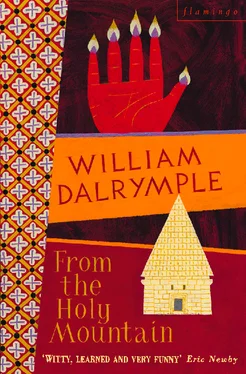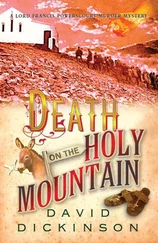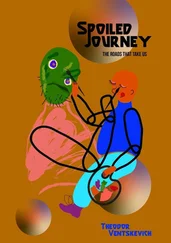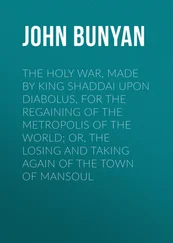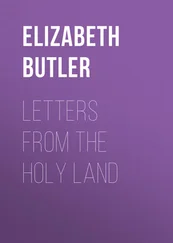Those who flout the unspoken rules on Armenian history still find themselves facing almost ludicrously severe penalties. In early December 1986 Hilda Hulya Potuoglu was arrested by the Turkish security police and charged with ‘making propaganda with intent to destroy or weaken national feelings’. The prosecutor of the Istanbul State Security deemed that her offence merited severe punishment, and asked for between a seven-and-a-half- and fifteen-year jail sentence. Her crime was to edit the Turkish edition of the Encyclopaedia Britannica , in which was included a footnote reading: ‘During the Crusades the mountainous regions of Cilicia were under the hegemony of the Armenian Cilician Kingdom.’ It would be impossible to find a respectable academic anywhere in the world who could possibly take issue with the historical accuracy of this statement, but in the view of the prosecutor, Potuoglu was guilty of distorting the facts on a politically sensitive issue: the Britannica quickly joined the index of forbidden books, along with such other politically dubious publications as The Times Atlas of World History and The National Geographic Atlas of the World .
During the 1970s and early 1980s it was clear that the censorship of publications dealing with the Armenians had been dramatically stepped up. The reason for this was the rise of ASALA – the Armenian Secret Army for the Liberation of Armenia – which in the early eighties began attracting international attention with a series of terrorist attacks, directed mainly at Turkish diplomats. The resulting publicity succeeded in bringing the issue of the Armenian genocide back onto the political agenda. This culminated in 1987 in the passing of a resolution in the European Parliament which recognised that the refusal of Turkey to acknowledge the Armenian genocide was an ‘insurmountable obstacle’ to the consideration of its bid to join the European Community.
The Turkish government argued that although some Armenians may have been killed in disturbances or deportations during the First World War, so were many Turks. Moreover, the Turks insisted, there were never very many Armenians in Anatolia in the first place, and the numbers supposedly massacred – around one and a half million – actually exceeded the total Armenian population of the Ottoman Empire. In 1989 the previously classified Ottoman archives relating to the period were opened up to a select group of Turkish scholars and combed for material to prove the Turkish case. The Turkish Foreign Minister claimed that when the process of declassification is complete, ‘allegations of an Armenian massacre will be no more than a matter of political abuse’.
None of this, of course, created a particularly favourable environment for the conservation of the principal legacy left by the Armenians in Turkey, the hundreds of Armenian churches and gravestones which still littered eastern Anatolia. It is probably no coincidence that it was at exactly this time that reports of deliberate Turkish government destruction of Armenian remains began to multiply. The stories were always difficult to corroborate, for what witnesses there were in these remote regions tended to be illiterate Turkish peasants, and after the destruction of a building it is extremely difficult to distinguish what is alleged to be dynamiting from what could well be earthquake damage.
There are however a small number of intriguing incidents which are difficult to explain away. At Osk Vank, for example, the village kaymakam (headman) told J. M. Thierry that a government official from Erzerum had come to the village in 1985. The official asked for help in destroying the church, but the kaymakam refused, saying it was far too useful: his people used it as a garage, granary, stable and football pitch.
Another case concerns the once magnificent group of churches sitting astride a deep canyon near Khitzkonk, south-east of Kars. In photographs taken at the beginning of the century, five superb churches can be seen. After the massacres the area was closed off to visitors, and was not reopened until the 1960s. When scholars returned, only one church, the eleventh-century rotunda of St Sergius, was still standing; the other four were no more than one or two courses high. Two had been completely levelled and the stones removed. The peasants told of border guards arriving with high explosives. More reliable witness to what had happened was contained in the remaining building: the cupola was untouched, but the side walls had been blown outwards in four places where small charges appeared to have been laid.
Certainly Armenian scholars are convinced that a deliberate campaign is under way to destroy all evidence of the Armenians’ long presence in eastern Anatolia. As my friend George Hintlian, curator of the Armenian Museum in Jerusalem, put it: ‘You can attribute disappearing churches to earthquakes, robbers, Kurds, Islamic fundamentalists, men from outer space or anything else you care to blame. The end result is exactly the same. Every passing year another Armenian church disappears and for this the Turkish authorities can only be pleased. They have already changed all the Armenian village names in eastern Anatolia; the churches are all we have left. Soon there will be virtually no evidence that the Armenians were ever in Turkey. We will have become a historical myth.’
THE MONASTERY OF MAR GABRIEL, TUR ABDIN, 18 AUGUST
Mas’ud, the driver I had been recommended, turned up at the hotel at seven in the morning.
We left Diyarbakir by the Mardin Gate and drove down into the brilliant green of the river valley. The Tigris, at its lowest in midsummer, was no wider than the Tweed at Berwick. Its banks were marshy with reeds and lined by poplars and cedars; beyond stretched fields of ripe corn. A fisherman on a flat skiff was spearing fish, like the gold figure of Tutankhamen in the Cairo museum; nearby children were wading in the shallows.
A little downstream, a black basalt bridge several hundred yards wide spanned the river. The central piers – built of great blocks of stones each the size of a coffin – were early Byzantine; the outer ones were more delicate, the work of Diyarbakir’s Arab conquerors: the fine kufic inscriptions they carved to record their work still decorated the upper registers. I had just got out my camera to take a picture of the bridge, with the grim black bastions of Diyarbakir crowning the hill in the background, when Mas’ud hissed at me to stop: ‘The men in the white car are plainclothes security police,’ he said.
I looked where he was indicating. A little behind us a white Turkish-made Fiat had pulled in opposite the fishing skiff. The passenger door was open and a burly Turk was standing looking at us. ‘They followed us down from the hotel. If you photograph the bridge they may arrest you.’
I was unsure whether Mas’ud was imagining things, but still put the camera away and got back in the car. We drove on; the white car stayed where it was.
The road followed the slowly meandering banks of the Tigris; soon the walls of Diyarbakir slipped out of view behind a curve in the river. We passed a ford where a shepherd was leading a string of long-haired Angora goats over the rushing water; nearby a party of peasants were dressing a vineyard full of young vines. On either bank the land was rich and fertile; above the sky was bright blue, and a light breeze cooled the already intense heat of the sun. It was difficult to imagine that this peaceful, plentiful countryside held any threat to anyone.
Then, turning a corner, we saw a barricade blocking the road in front of us. A group of men in ragged khaki uniforms, some topped with chequered keffiyehs , stood behind a line of petrol cans. Some held pistols, others snub-nosed sub-machine guns; a few held assault rifles.
Читать дальше
